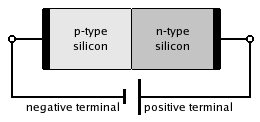sp3
Member level 5
Hi all,
I have a doubt related to diffusion current in PN junction :
After some electrons and holes diffuse into P and N region respectively they recombine with the majority carriers in the regions and vanish ( gone / out of scene). Here I am slightly confused with word vansih (gone / out of scene). Does it mean that after recombination, the electron-hole pair will get destroyed ?? but this may not be possible according to law of conservation of charges..if not where they will be ??
Please clear my doubts
Thanks in advance,
SP3
I have a doubt related to diffusion current in PN junction :
After some electrons and holes diffuse into P and N region respectively they recombine with the majority carriers in the regions and vanish ( gone / out of scene). Here I am slightly confused with word vansih (gone / out of scene). Does it mean that after recombination, the electron-hole pair will get destroyed ?? but this may not be possible according to law of conservation of charges..if not where they will be ??
Please clear my doubts
Thanks in advance,
SP3
